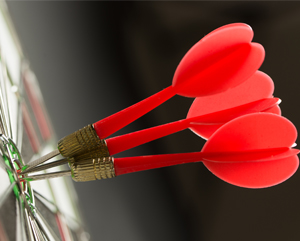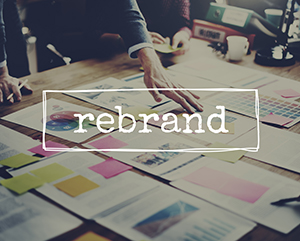3 ways augmented reality could change marketing
The marketing industry is constantly being shaped by technological developments and augmented reality is the next big thing. In the past 20 years alone, marketing has witnessed the rise of the digital age, the increasing dominance of social media, and the simultaneous decline of print and offline marketing. It has constantly had to adapt to technological developments, be it blockchain, programmatic or even forays into the use of artificial intelligence for content writing.
In the face of these developments, marketers have proven adaptable and resilient to change. The latest technological development which looks likely to make waves across the industry is augmented reality (AR), and commentators have been quick to explore what this could mean for future strategies. Here are three discussions taking place right now as to how augmented reality could change the nature of marketing:
1. AR could overcome ad blocking challenges
According to a recent article by Ruslan Bershtein, writing on behalf of the Forbes Communications Council, while digital technologies have presented a number of opportunities for marketers, the profitability of this has been somewhat curbed by increasing competition in the industry. Bershtein believes that the drop in return on investment (ROI) that has followed has led brands to become more open-minded and willing to experiment with as-yet-untapped technologies like augmented reality.
One of the biggest challenges facing marketers at the moment is the rise of ad blocking. As consumers become increasingly reluctant to have their online experience interrupted by unsolicited marketing, more and more are investing in ad blocking software that is making it ever more difficult for marketers to reach their target demographic online.
According to Bershtein, as AR technology develops and becomes an integrated part of peoples’ everyday lives, it could present an innovative way to sidestep ad blocking. This could also allow brands to reconnect with those customers who have been turned off by more traditional digital advertising. Although the technology is still in its infancy, Bershtein points out that
‘Manufacturers are expecting wearable AR tech to be the next big thing, with products like Microsoft’s HoloLens and Intel’s Vaunt looking to integrate people’s digital lives more effortlessly than ever before.’
He believes that as wearable tech become more prominent and AR develops, this could present more opportunities and novel ways for marketers to get creative with their campaigns. Predicting that ‘we will start to see more engaging and interactive advertising content being pushed to consumers’ and that 3D content will be streamed directly to consumers, AR could prove to be an exciting solution to some of the challenges currently facing marketers.
2. It could improve customers’ offline experience
While most technological developments are closely connected to other online platforms and are treated as part of an organisation’s online strategy as a result, AR can in fact be used to enhance customers’ offline experience.
According to Mikela Eskenazi, chief commercial officer at Blippar, AR is an ideal way to bring the benefits of online experiences into the physical world. Writing for The Drum, Eskenazi explains that everything from peer reviews and product recommendations to experiential marketing can be enhanced by tapping in to the potential that AR holds.
She argues that ‘given consumers’ daily use of smartphones and the changing mobile behaviour, it is vital to take advantage of its potential in engaging millions of people with meaningful experiences.’ She points to Cadbury’s as an example, which at the end of 2017 used AR technology to enhance its advent calendar experience. The brand encouraged customers to ‘scan their calendar, entering an augmented winter wonderland world and unlocking a different festive selfie filter every single day.’ Partnering with Blippar, the move generated ‘200,000 consumer interactions with AR and a high repeat usage’ and proved a successful first venture into the technology for the confectionary giant.
3. AR could boost ‘right place, right time’ potential
While there are increasingly sophisticated metrics to measure the reach of your campaign, engagement levels and conversion rates, many marketers still face the challenge of reaching their audience in the right place, at the right time. As the concepts of ‘abandoned basket syndrome’ or ROBO marketing demonstrate, many consumers may be engaged with and receptive to your brand, but might not be ready to make a purchase at that particular moment.
For Clifford Gross, CEO of AR platform Lucyd writing for MarTech Advisor, the potential that AR holds for real-time marketing could be the answer that marketers are looking for. Arguing that while ‘smartphone and mobile technology have allowed marketers to address this issue [of reaching consumers at the right time by using] tactics such as location-based push notification ads, promotions, or e-mail marketing,’ this doesn’t necessarily mean they are ‘cutting through the noise.’
The difference with AR is that ‘marketers can now reach consumers on the spot, in real time, with the exact information they need to drive purchasing behaviour.’ Gross points to ‘brands like Heineken and Oreo [which] are already experimenting with – and implementing – AR marketing tactics to reach people in-store or while they’re consuming the product to drive home the right message at the right place and time.’ With these brands as an example, he believes the capacity of AR to target customers at the right time is just beginning.
There is little doubt that AR technology is making headway into the marketing industry, but with time it could well make waves. The potential it holds for overcoming current challenges such as ad blocking, improving the customer experience and providing real-time product and service information could be game-changing for marketers. Only time and the development of the technology will tell, but those brands willing and able to experiment will be the ultimate winners.
If you’d like to talk about utilising new marketing techniques augmented reality, get in touch with the team at Think OTB.




